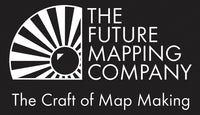Mark Lombardi
The Man Who Mapped The System
Mark Lombardi (1951 – 2000) was a twentieth century neo–conceptual artist, now there’s a title. Originally a librarian in Houston, he was an abstract painter in his spare time until his eureka moment. One day, discussing the details of a political scandal with a friend, he began taking notes on the participants, only to find himself doodling a simple chart…
Interested in power, money and the global elite, he began researching many of the scandals of the time. He would diligently research published sources and compile index cards of data, just as he did in the Library (14,000 of which now form part of the permanent collection at MOMA. His alchemy was to turn this information into sociograms - graphic maps of the links between individuals, corporations & governments so that he could ‘see
It was these charts, or Narrative Structures as he called them, which combined his interests in research with his love of art, and would form the body of his later work, which has been exhibited around the world.
“Lombardi worked to pull away the interlocking veils of personal avarice, institutional corruption, and governmental expediency to render elegant constellations of nefarious relationships”1.
To do this, he created his own topographic symbols (LINK TO OTHER BLOG), people are in circles, solid lines represent influence, dotted lines represent assets whilst wavy lines are those assets frozen. In red are more final events – court judgments, bankruptcy or death of the individual.
We love how balanced the drawings are – how much care has been taken to render the information. Sometimes they look like a flock of starlings trying to break off the page:
Others, representing a global theme, are almost a perfect sphere like the earth:
Some reveal surprising links:
His work is so accurate it was reported that after Sept 11, 2001, an FBI agent turned up at the Whitney Museum of American art to consult his drawings to trace financial connections between Osama bin Laden and various Saudi and American commercial interests1.
The interesting part is that his style of presenting information imparts no judgment – it is the viewer alone who interprets the information. Some say his sociograms only serve to confuse the viewer more due to a lack of any hierarchy of information – are they really a map, shouldn’t a map simplify information for the reader? “He liked to say that his drawings were probably best understood by the newspaper reporters who had covered the scandals he diagrammed”
In fact a recent project has begun to digitize his work. Each node is given a unique code linking it to the source material. The project’s founder hopes that this will enable viewers to be able to interrogate his drawings for further information.
At the Future Mapping Company, we love the human touch of his maps – some mapping can be done by computer algorhythms but it’s the cartographer’s touch that renders a map truly beautiful.
If you like this article, we recommend reading more about Mark Lombadi and his work at:
http://cartographiesoftheabsolute.wordpress.com/2010/05/08/mapping-conspiracy/
http://benfry.com/exd09/
http://www.lombardinetworks.net/







